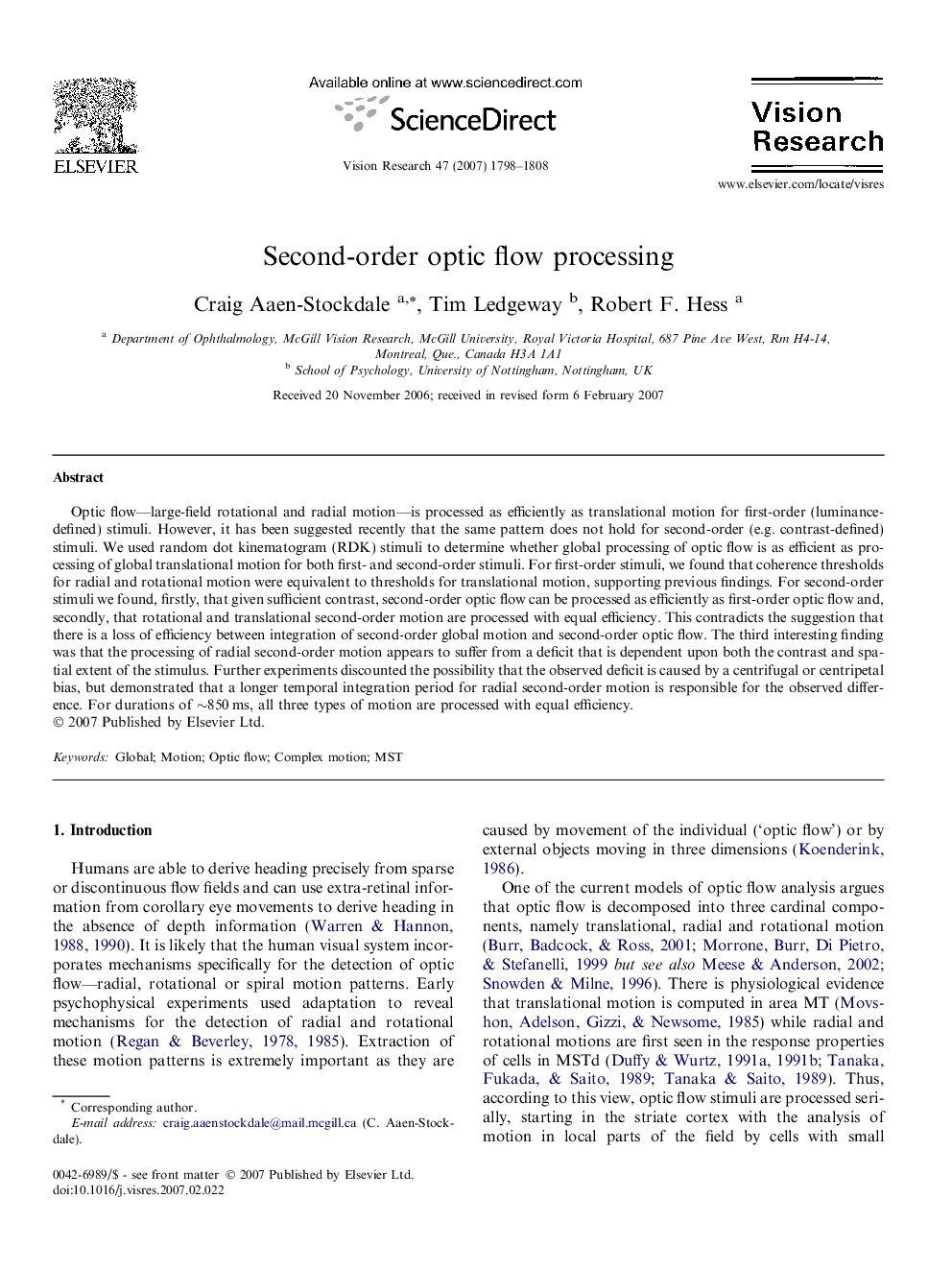| Article ID | Journal | Published Year | Pages | File Type |
|---|---|---|---|---|
| 4036257 | Vision Research | 2007 | 11 Pages |
Optic flow—large-field rotational and radial motion—is processed as efficiently as translational motion for first-order (luminance-defined) stimuli. However, it has been suggested recently that the same pattern does not hold for second-order (e.g. contrast-defined) stimuli. We used random dot kinematogram (RDK) stimuli to determine whether global processing of optic flow is as efficient as processing of global translational motion for both first- and second-order stimuli. For first-order stimuli, we found that coherence thresholds for radial and rotational motion were equivalent to thresholds for translational motion, supporting previous findings. For second-order stimuli we found, firstly, that given sufficient contrast, second-order optic flow can be processed as efficiently as first-order optic flow and, secondly, that rotational and translational second-order motion are processed with equal efficiency. This contradicts the suggestion that there is a loss of efficiency between integration of second-order global motion and second-order optic flow. The third interesting finding was that the processing of radial second-order motion appears to suffer from a deficit that is dependent upon both the contrast and spatial extent of the stimulus. Further experiments discounted the possibility that the observed deficit is caused by a centrifugal or centripetal bias, but demonstrated that a longer temporal integration period for radial second-order motion is responsible for the observed difference. For durations of ∼850 ms, all three types of motion are processed with equal efficiency.
